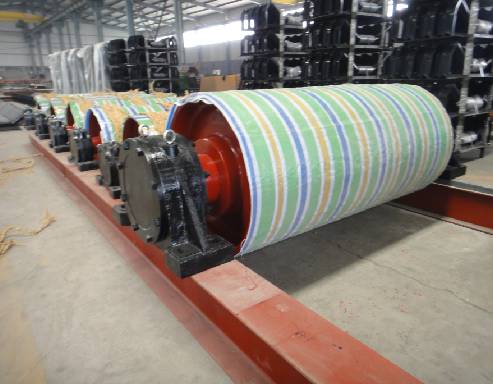 Afrikaans
Afrikaans  Albanian
Albanian  Amharic
Amharic  Arabic
Arabic  Armenian
Armenian  Azerbaijani
Azerbaijani  Basque
Basque  Belarusian
Belarusian  Bengali
Bengali  Bosnian
Bosnian  Bulgarian
Bulgarian  Catalan
Catalan  Cebuano
Cebuano  Corsican
Corsican  Croatian
Croatian  Czech
Czech  Danish
Danish  Dutch
Dutch  English
English  Esperanto
Esperanto  Estonian
Estonian  Finnish
Finnish  French
French  Frisian
Frisian  Galician
Galician  Georgian
Georgian  German
German  Greek
Greek  Gujarati
Gujarati  Haitian Creole
Haitian Creole  hausa
hausa  hawaiian
hawaiian  Hebrew
Hebrew  Hindi
Hindi  Miao
Miao  Hungarian
Hungarian  Icelandic
Icelandic  igbo
igbo  Indonesian
Indonesian  irish
irish  Italian
Italian  Japanese
Japanese  Javanese
Javanese  Kannada
Kannada  kazakh
kazakh  Khmer
Khmer  Rwandese
Rwandese  Korean
Korean  Kurdish
Kurdish  Kyrgyz
Kyrgyz  Lao
Lao  Latin
Latin  Latvian
Latvian  Lithuanian
Lithuanian  Luxembourgish
Luxembourgish  Macedonian
Macedonian  Malgashi
Malgashi  Malay
Malay  Malayalam
Malayalam  Maltese
Maltese  Maori
Maori  Marathi
Marathi  Mongolian
Mongolian  Myanmar
Myanmar  Nepali
Nepali  Norwegian
Norwegian  Norwegian
Norwegian  Occitan
Occitan  Pashto
Pashto  Persian
Persian  Polish
Polish  Portuguese
Portuguese  Punjabi
Punjabi  Romanian
Romanian  Russian
Russian  Samoan
Samoan  Scottish Gaelic
Scottish Gaelic  Serbian
Serbian  Sesotho
Sesotho  Shona
Shona  Sindhi
Sindhi  Sinhala
Sinhala  Slovak
Slovak  Slovenian
Slovenian  Somali
Somali  Spanish
Spanish  Sundanese
Sundanese  Swahili
Swahili  Swedish
Swedish  Tagalog
Tagalog  Tajik
Tajik  Tamil
Tamil  Tatar
Tatar  Telugu
Telugu  Thai
Thai  Turkish
Turkish  Turkmen
Turkmen  Ukrainian
Ukrainian  Urdu
Urdu  Uighur
Uighur  Uzbek
Uzbek  Vietnamese
Vietnamese  Welsh
Welsh  Bantu
Bantu  Yiddish
Yiddish  Yoruba
Yoruba  Zulu
Zulu conveyor pulley lagging material
Understanding Conveyor Pulley Lagging Material
Conveyor systems are integral to many industries, facilitating the efficient transport of materials across vast distances. A critical component of these systems is the conveyor pulley, which helps to drive the belt and manage the overall performance of the conveyor. To enhance the effectiveness and longevity of conveyor pulleys, lagging materials are utilized. This article explores the significance of conveyor pulley lagging materials, their types, benefits, and best practices for selection.
What is Conveyor Pulley Lagging?
Lagging refers to the material applied to the surface of a conveyor pulley to improve traction, protect the pulley from wear and tear, and enhance overall conveyor performance. The lagging provides a better interface between the pulley and the conveyor belt, reducing slippage, and extending the life of both the pulley and the belt. It is crucial in minimizing maintenance costs and downtime in industrial operations.
Types of Lagging Materials
1. Rubber Lagging This is the most commonly used type of lagging material. Rubber provides excellent traction and wear resistance, making it suitable for a variety of applications. It comes in different grades and shore hardness levels, allowing for customization based on the specific needs of the conveyor system.
2. Ceramic Lagging For applications where high wear resistance is crucial, ceramic lagging is an excellent choice. It is typically used in environments with significant material impact and can withstand abrasive materials, making it ideal for bulk handling operations.
3. Polyurethane Lagging Polyurethane lagging offers a combination of flexibility and durability. It can resist chemicals and is effective in high-temperature environments. This material is less common but is beneficial in specific applications where unique conditions exist.
4. Metal Lagging Often used in heavy-duty applications, metal lagging provides exceptional wear resistance and is suited for environments subject to extreme conditions. While it can be more expensive and heavier than other options, its longevity can justify the investment.
5. Combinations Many modern conveyor systems utilize composite lagging materials that combine various elements to optimize performance. These can include rubber infused with ceramic tiles or other innovative blends that capitalize on the strengths of multiple materials.
conveyor pulley lagging material

Benefits of Using Lagging Materials
1. Increased Traction One of the primary benefits of lagging is the increased friction it provides between the belt and pulley. Enhanced traction minimizes slippage, thereby maintaining efficiency and reliability in material transport.
2. Reduced Wear and Tear The application of lagging helps protect pulleys from damage caused by abrasion and impact. This extends the lifespan of both the pulley and the conveyor belt, reducing the frequency of replacements.
3. Improved Performance With better traction and reduced wear, the overall performance of the conveyor system enhances. This leads to smoother operations and minimized downtime, ultimately improving productivity.
4. Cost-Effectiveness By protecting vital components and reducing maintenance needs, lagging materials contribute to lower operational costs. Companies can save significantly over time by investing in quality lagging options.
Best Practices for Selection
When selecting lagging material, it is essential to consider various factors, including the type of materials being transported, the operational environment (e.g., temperature, moisture, chemicals), and the specific requirements of the conveyor system. Consulting with experts in conveyor design can help ensure that the chosen lagging meets the necessary criteria for optimal performance.
Additionally, regular inspections and maintenance of lagging materials should not be overlooked. Wear and tear can affect performance, so timely replacements or repairs are vital to maintaining efficiency.
Conclusion
Conveyor pulley lagging materials are a crucial component of effective conveyor systems, providing enhanced traction, protection, and overall performance. Understanding the various types of lagging and their benefits can help companies make informed decisions that improve efficiency and reduce costs. By prioritizing quality lagging materials and regular maintenance, organizations can ensure the longevity and reliability of their conveyor systems, ultimately contributing to overall operational success.
-
Revolutionizing Conveyor Reliability with Advanced Rubber Lagging PulleysNewsJul.22,2025
-
Powering Precision and Durability with Expert Manufacturers of Conveyor ComponentsNewsJul.22,2025
-
Optimizing Conveyor Systems with Advanced Conveyor AccessoriesNewsJul.22,2025
-
Maximize Conveyor Efficiency with Quality Conveyor Idler PulleysNewsJul.22,2025
-
Future-Proof Your Conveyor System with High-Performance Polyurethane RollerNewsJul.22,2025
-
Driving Efficiency Forward with Quality Idlers and RollersNewsJul.22,2025





























